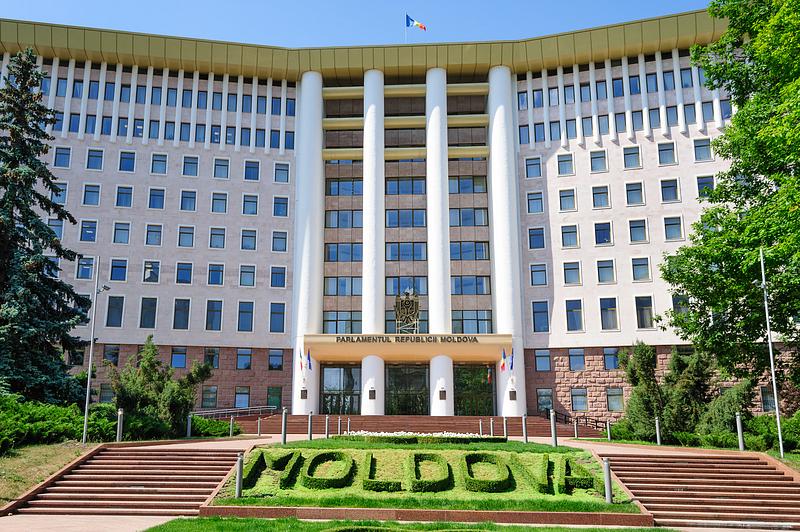A Historical Betrayal: Why Moldova Must Choose Europe Over Russia



by Simona Laiu
Russia strategically named this region "Bessarabia," a title once used only for the southern part of Moldova, now extended to the entire annexed territory. The goal was clear: to fabricate a distinct regional identity and obscure Moldova’s historical connection to the rest of Romania.
Over the next century, Russian authorities embarked on an aggressive russification campaign, bringing in settlers from Russia, Ukraine, Bulgaria, and Germany to shift the ethnic balance. The Romanian language was marginalized, and Moldovan culture was systematically suppressed. This relentless strategy of assimilation persisted until the Bolshevik Revolution in 1917, when the chaos that engulfed Russia allowed Moldova to declare its union with Romania in 1918. This brief period of freedom, however, was never recognized by Moscow.
In 1939, the Nazi-Soviet Pact (Ribbentrop-Molotov) sealed Moldova’s fate once again. The secret protocol between Hitler and Stalin divided Eastern Europe into spheres of influence, and Bessarabia was claimed by the Soviet Union. In June 1940, under Soviet ultimatum and military threat, Romania was forced to cede the territory. Thus began the reoccupation of Moldova by Soviet forces, and with it, the horrors of Stalin’s regime. Soviet Brutality: Deportations, Hunger, and Ethnic Replacements The Soviet reoccupation of Bessarabia in 1940 was followed by a wave of terror. Stalin’s government launched a brutal campaign of repression aimed at purging "anti-Soviet elements" from the region.
Thousands of Moldovans, particularly intellectuals, landowners, and priests, were deported to Siberia and Kazakhstan. Those who remained were subject to harsh Soviet rule, which sought to obliterate Moldovan national consciousness through forced collectivization, suppression of the Romanian language, and an orchestrated cultural genocide. In 1941, the tides of World War II temporarily returned Bessarabia to Romanian control. However, this respite was short-lived. By 1944, as the Red Army advanced, the Soviet Union recaptured the region and reimposed its authoritarian grip. Once again, Moldova became a Soviet Socialist Republic, and Stalin’s policies resumed with a vengeance.
From 1946 to 1947, Moldova experienced one of the most devastating famines in its history, exacerbated by Soviet requisitions of foodstuffs for other parts of the USSR. This famine, coupled with a ruthless campaign of deportations, claimed the lives of over 200,000 people. Moldovan villages were depopulated as survivors fed or succumbed to starvation. To fill the void, Soviet authorities implemented a deliberate policy of ethnic replacement, importing large numbers of Russians and Ukrainians to the region. This was an intentional effort to dilute the Romanian ethnic majority and to ensure that Moldovans would remain under Moscow’s control, politically and culturally. Why Moldova Must Fear Putin’s Russia Today The echoes of Russia’s imperial ambitions are still felt today un-der the leadership of Vladimir Putin. Moldova remains vulnerable to Russian influence, especially with the presence of Russian-backed separatists in Transnistria, a breakaway region that Moscow uses as a foothold in Moldova.
Putin’s aggressive foreign policy, as demonstrated by the invasion of Ukraine and the destabilization of Eastern Eu-rope, mirrors the imperialism of his predecessors. Moldova, a small and vulnerable nation, must look to its past to understand the threat that looms from the east.
Russia’s long-standing strategy has been clear: to keep Moldova within its sphere of influence, whether through direct occupation, economic manipulation, or political interference. However, Moldova now has a chance to break free from this cycle of subjugation. By joining the European Union, Moldova can secure its sovereignty, protect its cultural identity, and ensure a future free from the shadow of Russian imperialism. For centuries, Moldova has been a pawn in the geopolitical ambitions of larger powers. But today, the people of Moldova face a critical choice. Will they continue to live under the threat of Russian domination, or will they embrace the values of democracy, freedom, and prosperity that the European Union represents? The path forward is clear: Moldova’s future lies in Europe, not under the grip of Putin’s Russia.
Simona Laiu was born in Romania and moved to Canada at 18 to join her family. She worked as a museum specialist, historian, and educator. In 2013, she attended graduate school at Stanford University, completing a thesis on the role of national costumes in Romania’s history. In 2020, she co-curated the exhibit "A Particular Beauty: Romanian Folk Clothing” at the Maryhill Museum of Art, and in 2023, she published a book on Romanian national costumes. In 2024, she curated the "Ia: rădăcini spre infnit” exhibition in Chișinău, blending antique and contemporary Romanian shirts. Simona now lives in Honolulu, Hawaii, promoting Romanian culture globally.
This article was published in the first issue of Beyond Borders magazine, an editorial project aiming to promote the Strong Romanian Spirit through storytelling. The magazine is available to read online here.
(Photo: Serghei Starus | Dreamstime.com)